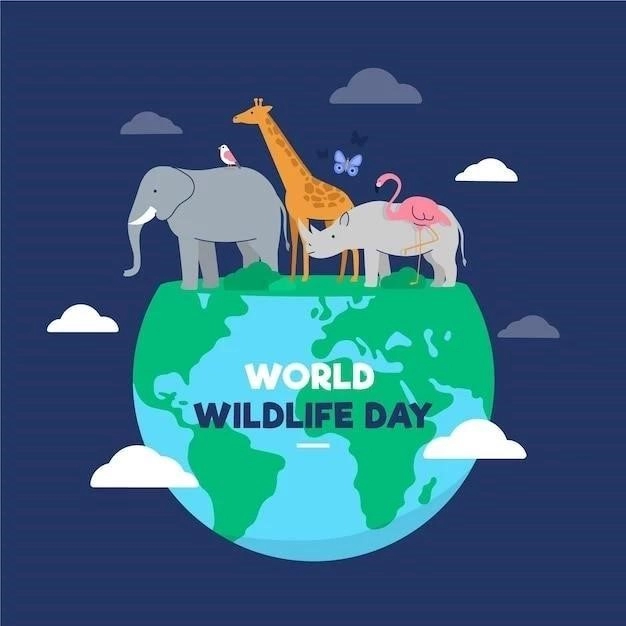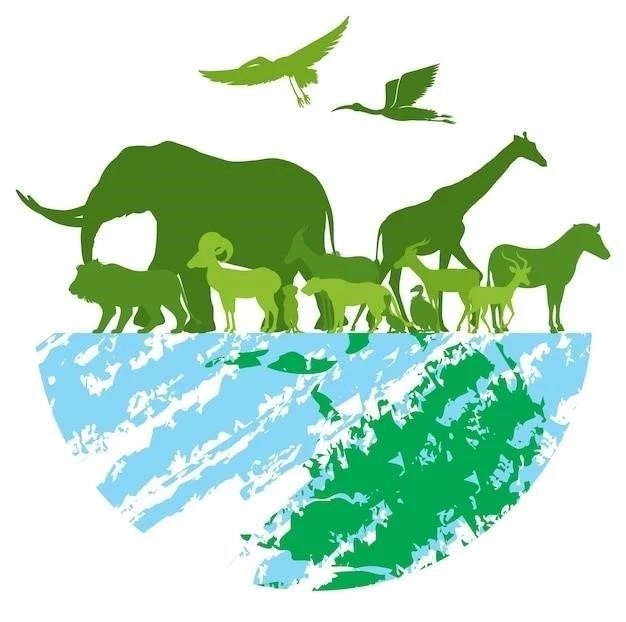Last year, I volunteered on a wildlife conservation project in rural Kenya. I had always been passionate about animals and the environment, but this experience opened my eyes to the unique challenges faced by developing countries in their conservation efforts.
The Vicious Cycle of Poverty and Environmental Degradation
I witnessed firsthand the complex interplay between poverty and environmental degradation. Many communities relied heavily on natural resources for their livelihoods. This dependence, coupled with limited economic opportunities, often led to unsustainable practices like deforestation for charcoal production or poaching to feed families.
I remember meeting a woman named Abeni, who made a living selling charcoal. She knew deforestation was harmful, but it was the only way she could afford to feed her children. This experience showed me how poverty can create a vicious cycle, forcing people to exploit the very resources they depend on for survival.

Limited Resources and Competing Priorities
The Kenyan government, like many developing nations, had limited resources to dedicate to conservation. While there was a genuine desire to protect wildlife, basic needs like healthcare, education, and infrastructure often took precedence.
I saw this firsthand when visiting a national park. While the rangers were dedicated, they were underequipped and understaffed to effectively patrol the vast area and combat poaching. This highlighted the difficult balancing act developing countries face when allocating limited resources.
The Need for Community-Based Conservation
One of my key takeaways was the importance of community-based conservation. Top-down approaches, while well-intentioned, often fail to address the root causes of environmental degradation and can alienate local communities.
During my time in Kenya, I worked with an organization that involved locals in conservation efforts. They provided training on sustainable farming practices and eco-tourism initiatives, creating alternative livelihoods that reduced pressure on wildlife and their habitats. This approach, which recognized the needs and perspectives of local people, proved far more effective in fostering a sense of ownership and responsibility towards conservation.

Moving Forward⁚ A Collaborative Approach to Conservation
My experience in Kenya was both challenging and incredibly rewarding. I left with a deeper understanding of the complexities surrounding wildlife conservation in developing countries. Its clear that there are no easy solutions, but I believe that by addressing the underlying issues of poverty, empowering local communities, and fostering global collaboration, we can create a future where both people and wildlife can thrive.
One project that particularly resonated with me involved the planting of acacia trees. These trees, vital for soil health and as a food source for giraffes, had been decimated due to charcoal production. I worked alongside local women, learning their traditional methods of seed collection and seedling care. It was physically demanding work under the hot Kenyan sun, but the womens dedication was inspiring. They understood the long-term benefits these trees would bring to their community and the surrounding ecosystem.
I also witnessed firsthand the devastating effects of the illegal wildlife trade. We visited a sanctuary that housed orphaned elephants and rhinos, their parents victims of poaching. Seeing these majestic creatures up close, forever scarred by human greed, was heartbreaking. It solidified my belief that conservation efforts must address not only poverty, but also the demand for illegal wildlife products that fuels this cruel industry;
Leaving Kenya was bittersweet. I carried with me a profound respect for the resilience of the people and the breathtaking beauty of their country. It was a stark reminder that conservation is not just about protecting animals, its about safeguarding the intricate web of life that sustains us all; I left with a renewed sense of purpose, committed to using my voice and my actions to advocate for a more sustainable and equitable future for both people and wildlife.
The experience stayed with me long after I returned home. I found myself seeking out ways to stay involved, to bridge the distance between my comfortable life and the realities I had witnessed. I started by supporting organizations working on the ground in Kenya, donating what I could and sharing their stories with anyone who would listen.
But it wasnt enough. I felt a pull, a yearning to return to that landscape, to reconnect with the people and the cause that had touched me so deeply; So, a year later, I did. This time, I joined a research project studying the impact of climate change on elephant migration patterns.
It was a different kind of experience – less hands-on conservation, more data collection and analysis. I spent my days tracking elephants through the bush, carefully recording their movements and behaviors. The work was challenging, both physically and mentally, but it was exhilarating to be immersed in the elephants world, to contribute to research that could help protect them.
One evening, while observing a herd of elephants at a watering hole, I had an encounter that Ill never forget. A young calf, separated from its mother, wandered towards our research vehicle. It was curious, unafraid. For a moment, our eyes met, and I felt a powerful connection to this vulnerable creature. It was a stark reminder of why I was there, of the immense responsibility we have to protect these animals and their shrinking world.
My work in conservation is far from over. Its an ongoing journey, one that requires constant learning, adaptation, and a deep well of passion. But Im committed to playing my part, however small, in creating a future where both people and wildlife can thrive.
That encounter with the elephant calf solidified something for me. It wasnt enough to study these creatures from afar, to analyze data and write reports. I needed to be more directly involved in their protection, to work on the front lines of conservation.
So, I made a life-altering decision. I packed my bags, said goodbye to my comfortable life back home, and moved to Kenya permanently. I joined a small, grassroots organization working in the Maasai Mara, a region renowned for its incredible biodiversity but also facing immense pressure from habitat loss and human-wildlife conflict.
My days were long and physically demanding. I worked alongside Maasai rangers, learning their traditional knowledge of the land and animals, while also sharing my own expertise in conservation biology. We patrolled vast stretches of savanna, tracking lions to monitor their movements and assess the health of their prides. We responded to reports of elephants raiding crops, finding ways to deter them without resorting to violence.
One of the most challenging, yet rewarding, aspects of my work was engaging with the local communities. I spent countless hours in villages, drinking sweet chai with elders, listening to their concerns, and learning about their deep-rooted connection to the land. I helped organize workshops on sustainable farming practices, teaching women how to improve their yields without encroaching on wildlife corridors. I worked with young people, igniting their passion for conservation through educational programs and wildlife clubs.
It wasnt always easy. There were times when I felt overwhelmed by the scale of the challenges, frustrated by the lack of resources, and heartbroken by the senseless killing of animals. But then I would see the hope in the eyes of a young girl who dreamed of becoming a park ranger, or witness a community come together to protect a herd of elephants, and I would be reminded of why I was there, why I had given up everything to pursue this calling.
Living and working in the Mara was a far cry from my previous life. I swapped my city apartment for a simple hut, traded my car for a beat-up Land Rover, and learned to navigate the complexities of a new culture and language. There were times when I missed the comforts of home, the ease of communication, the familiar rhythms of my old life.
But those moments were fleeting, overshadowed by the immense satisfaction I felt in the work I was doing. I learned so much from the Maasai people – their deep respect for nature, their resilience in the face of adversity, their unwavering sense of community. They taught me that conservation is not just about science and data, its about people, about understanding their needs and finding ways to coexist with nature.
One particular experience stands out in my mind. We were tracking a pride of lions that had been preying on livestock from a nearby village. Tensions were high, and the villagers were threatening to retaliate. I knew we had to act quickly to prevent a tragedy.
We spent days following the lions, carefully observing their movements and hunting patterns. We discovered that a wire fence, erected to protect crops, was actually funneling the lions towards the village, creating a dangerous conflict zone. We worked with the community to identify a more suitable location for the fence, one that would allow the lions to move freely while also protecting the villagers livelihoods.
It wasnt an easy solution. It required compromise from both sides, a willingness to listen and learn from each other. But in the end, we found a way to coexist, to respect the needs of both people and wildlife. And that, I realized, is what conservation is all about – finding that delicate balance, that shared space where both can thrive.











I can only imagine how challenging it must be for developing countries to balance conservation with other pressing needs like healthcare and education.
This article highlights the interconnectedness of global issues and the need for collaborative solutions.
The lack of resources for conservation in developing countries is a serious concern. We need to find ways to support these nations in their efforts.
Volunteering in Kenya was a life-changing experience. Seeing the connection between poverty and environmental damage was eye-opening.
This article is a call to action for all of us to be more mindful of our own consumption habits and the impact they have on the environment.
Community-based conservation seems like the most effective way to create lasting change. It\
This article underscores the importance of finding sustainable solutions that benefit both people and the planet.
I\
This article makes me want to learn more about how I can support conservation efforts in developing countries.
The vicious cycle of poverty and environmental degradation is a complex issue, but it\
I was particularly struck by the author\
The author\
It\
This article reminds me of the importance of supporting organizations working on the front lines of conservation in developing countries.
This article highlights the importance of understanding the local context when developing conservation strategies.